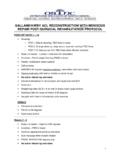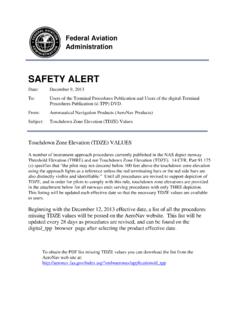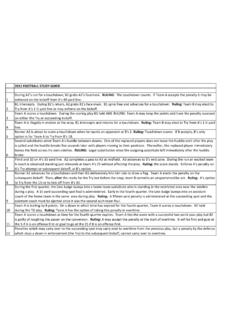Transcription of Weight-Bearing Restrictions - orthoncforms.com
1 1501 North Bickett Blvd. Suite E ~ Louisburg, NC 27549 ~ Phone (919) 497-0445 ~ Fax (919) 497-0118. Weight-Bearing Restrictions . Some bone and joint injuries may not allow you to put your body weight on the bone or joint to let the injury heal. Based on your injury, you will be taught to follow limits on the amount of weight you can put on the injured arm or leg. These are often called Weight-Bearing Restrictions . You may need to use a walker, crutches or a cane to limit the weight on your injured leg. Your doctor will tell you when you can change the amount of weight you put on the injured leg or arm. Follow your doctor's instructions to prevent problems with healing. Your physical therapist (PT) will teach and guide you on your limits.
2 NON- weight bearing (NWB). Place no weight on your injured leg or arm. While you stand or walk, you must hold your injured leg off the floor. Do not touch the floor with your injured leg. TOE-TOUCH weight bearing (TTWB) OR TOUCH-DOWN weight bearing . (TDWB). When you stand or walk, you may only touch the floor for balance. Do not place any body weight on your leg. Imagine you have an egg under your foot that you are not to crush. PARTIAL weight bearing (PWB). When you stand or walk, you may place some of your body weight on your injured leg. Your doctor will decide on the amount of weight . Often it is less than half your weight . weight bearing AS TOLERATED (WBAT). When you stand or walk, place only as much weight as feels comfortable on your injured leg or arm.
3 Let pain be your guide. If you feel pain, place less weight on the leg or arm. FULL weight bearing (FWB). You may place your full body weight on your leg or arm. *If you have any questions about these guidelines or the appropriateness of any other activities . please call Orthopaedic Specialists of North Carolina at (919) 497-0445.




![]khWj ed =k Z[](/cache/preview/4/9/3/1/6/0/0/4/thumb-49316004a0f860b7ac2e6396811629fe.jpg)








